The big difference between Pastéis de Nata and Pastéis de Belém is …
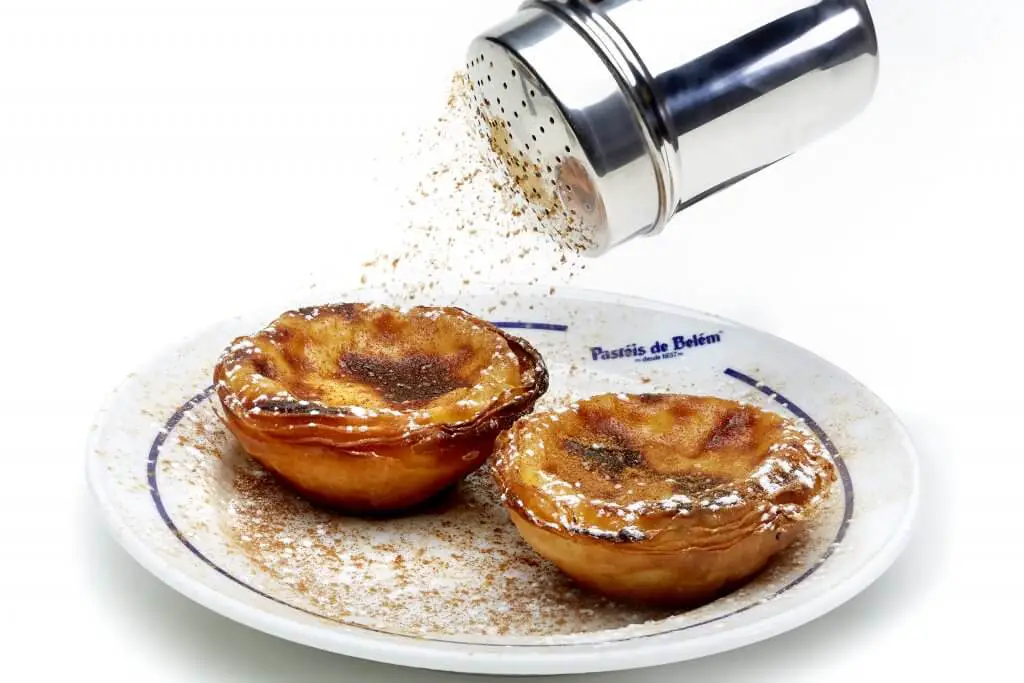
Wait, first … What are Pastéis de Nata?
Pastéis de Nata is a Portuguese pastry that resembles an egg custard tart. They have a flaky crust and a caramelized creme surface.
Eat them hot or cold, with a sprinkling of cinnamon.
One pastry is called a pastel. Two or more are called pastéis. So pastéis is the plural form of pastel. Pastéis is pronounced (pass tashe) (tashe sounds like crustacean)
Nata (pronounced not – uh) means cream in Portuguese.
So why are many pastéis de nata referred to as pastéis de Belém?
It is similar to how people will ask for a Kleenex when they need a tissue, or a Band-Aid when any bandage will do. Just like not all personal watercraft are Jet Skis, not all hot tubs are Jacuzzis, and not all inline skates are Roller Blades.
Not all pastéis de nata are pastéis de Belém.
Only those that come from the Fábrica de Pastéis de Belém, following the original secret recipe, are Pastéis de Belém.
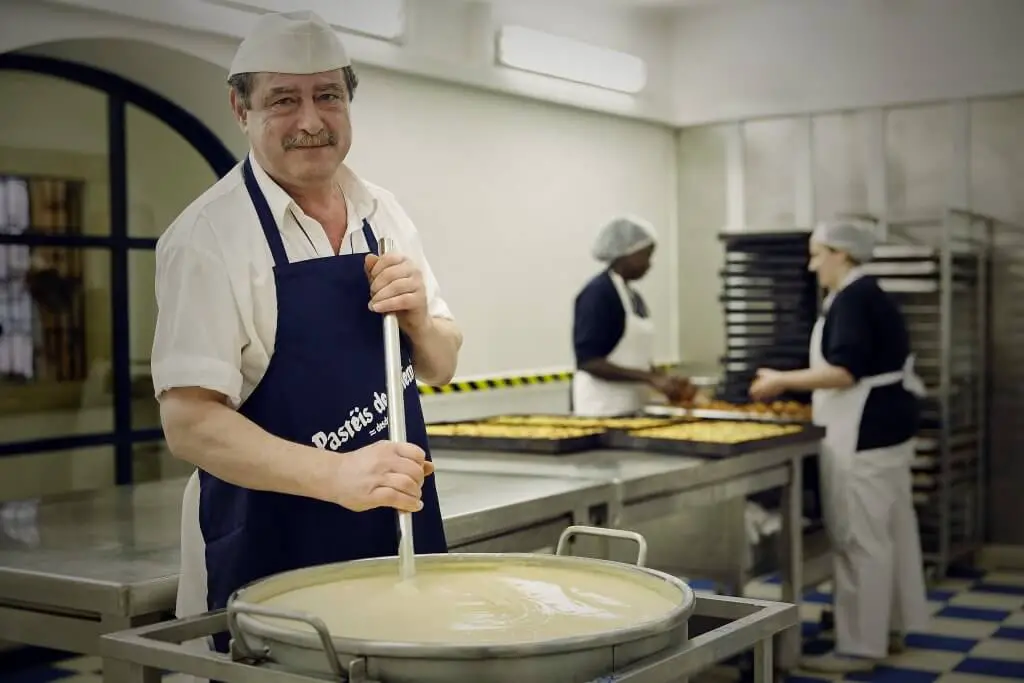
All others are pastéis de Nata – most of which are fantastic and can be found in bakeries and cafés all over the city.
The history of Pastéis de Belém
These delicious yellow pastries originated at the Jerónimos Monastery in Belém in the seventeenth century. The monks used egg whites to starch their laundry, and rather than throw away the yolks, they used them to create these treats.
Portugal is a devoutly Catholic country with many churches, monasteries, and convents. These organizations were forced to disband in Portugal’s Liberal Revolution of 1820.
In order to support themselves at the time, some of the monks began selling their custard pastries in the shop of a sugar-cane refinery down the street.
This shop soon bought the original recipe from the monks and has fiercely guarded it ever since.
Today they bake between 20,000 and 40,000 pastries per day.
Some award-winning pastéis de nata that you might want to check out include:
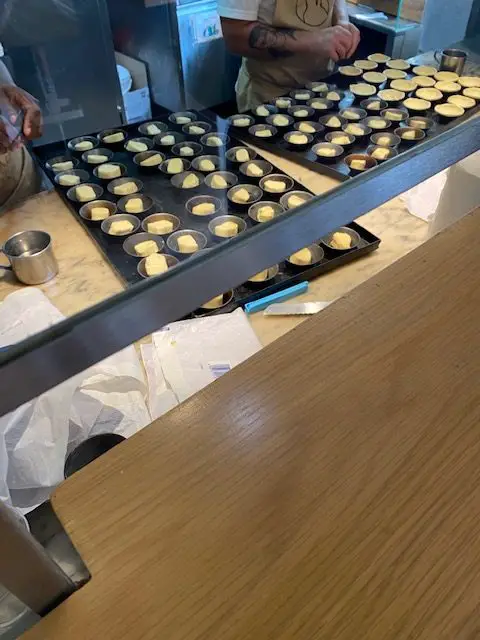
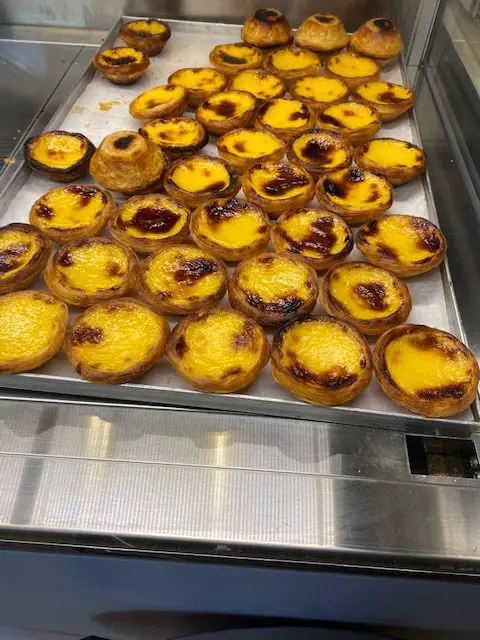
- Pastelaria Santo António won best pastel de nata in Lisbon in 2019. Located in the Castelo neighborhood at Rua Milagre de Santo António 10.
- Manteigaria – Rua do Loreto 2
- Mercado do Peixe in the Ajuda neighborhood at Estrada Pedro Texeira – Vila Simão – Caramão da Ajuda
- Pastelaria Aloma – Campo de Ourique – A 70+ year old shop on Rua Francisco Metrass
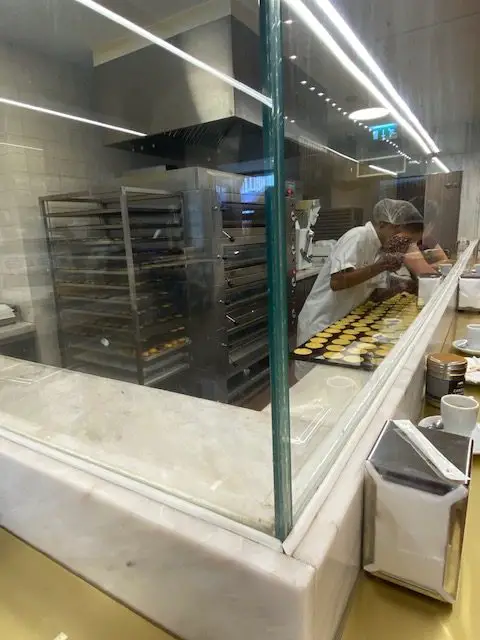
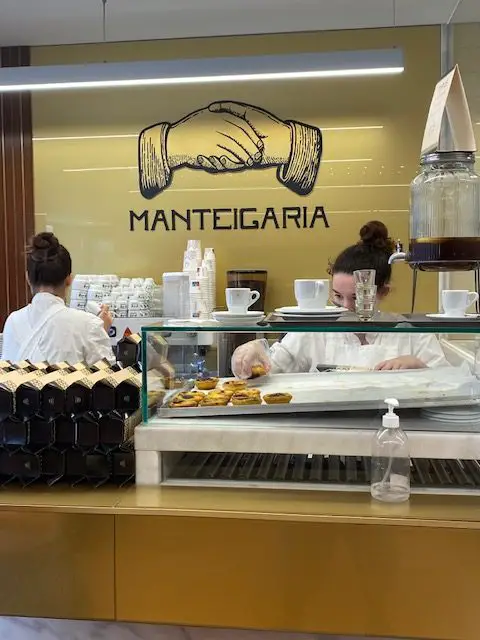
Where to find the original Pastéis de Belém
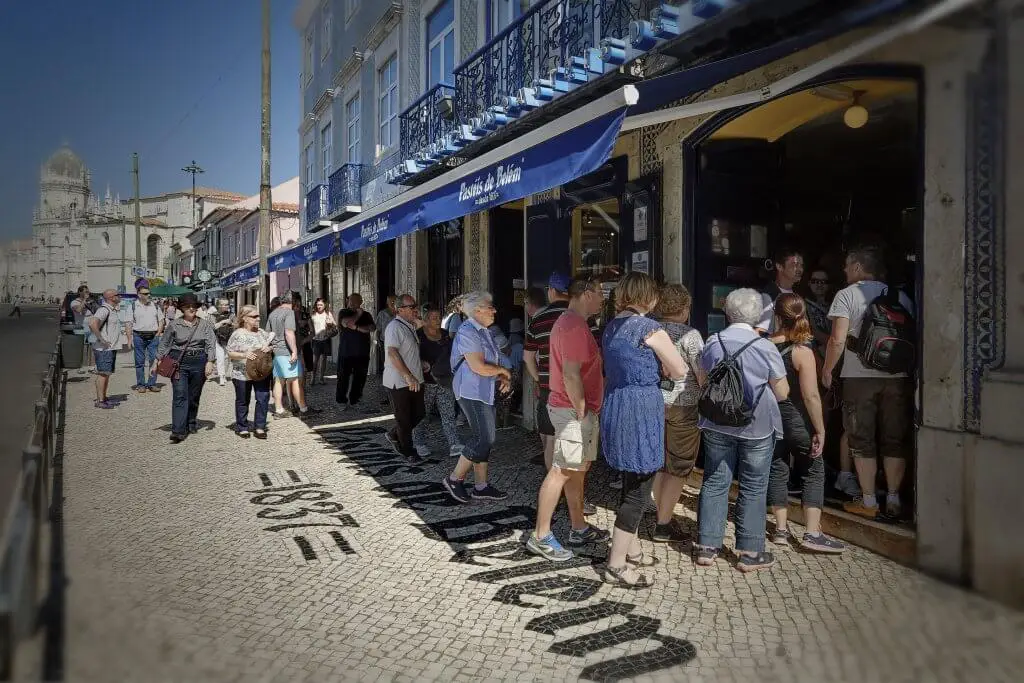
Fábrica de Pastéis de Belém
Rua de Belém 84 – 92
GPS: 38.69760778748108, -9.203251631077741
Official website: Home | Pastéis de Belém (pasteisdebelem.pt)
Take the train to Cascais from the Cais do Sodré station. Get off at the Belém stop and walk east along the river.
Or, take Tram 15E How to get from Alfama to Belém (Hint: Tram 15E) from Praça da Figueira or Cais do Sodré and get off at the Jerónimos Monastery stop.
Or, take bus 201, 714, 727, 728, 729 or 751. Get off at the Jerónimos Monastery stop.
Be prepared for long lines. There will be less of a line in the late afternoon, which is when I would recommend you visit the Belém neighborhood. For more information on one of the most interesting neighborhood’s in Lisbon, see my article Lisbon’s historic Belém neighborhood | Everything you need to know
Hours of Pastéis de Belém
Open daily from 8 am – 11 pm.
Now you know the main difference between a pastel de Belém and a pastel de nata. Thank you for reading.
I am not affiliated with any of the bakeries mentioned in this article, but if you purchase a tour or experience through Get Your Guide, I can earn a commission for that. The commission should not affect the price you pay for the tour.